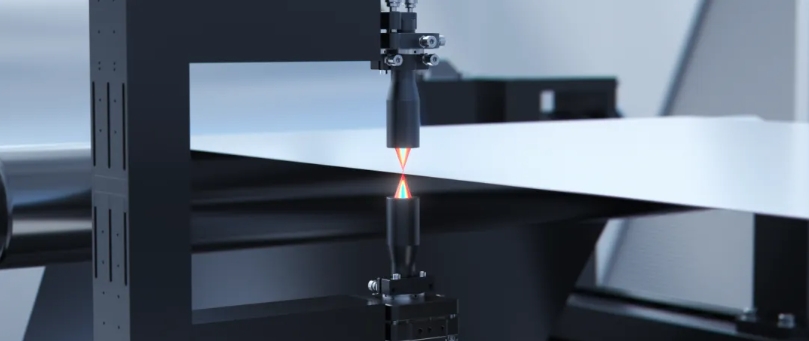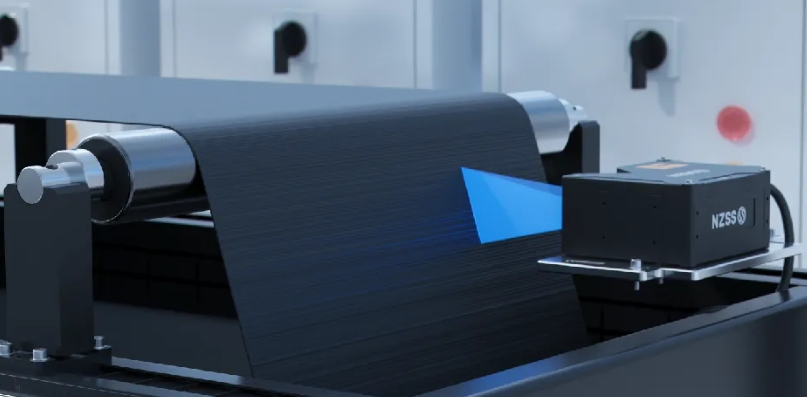The push for better and safer lithium batteries demands more precise manufacturing than ever. Battery excellence starts with high-quality electrode sheets.
SinceVision is making great progress in the important front-end process of electrode preparation. SinceVision uses advanced non-contact sensing technology. This helps manufacturers gain control over key factors, like thickness and material use. As a result, it drives progress in battery technology.
This article explores how SinceVision's innovative solutions are changing important stages. These tasks include detecting foil leftovers, measuring electrode thickness during coating, and scribing electrodes.
Foil Residual Material Detection

One of the key challenges in electrode manufacturing is material waste. SinceVision tackles this issue with its SR Series 3D Laser Profiler. It's made for detecting foil residual material. This sensor has a detection range of 288mm and accurately measures the distance. It also offers a repeatability accuracy of 0.1mm. Plus, it samples at a high speed of 20 kHz/s.
This allows for real-time collection of foil thickness data. It also calculates the exact length of leftover material. The impact is clear: less material waste happens during unwinding and roll changes. This leads to better material use and saves costs.
Manufacturers looking to boost efficiency and cut waste will see SinceVision's 3D laser profiling technology as a game-changer for lithium battery production. As we move down the production line, keeping the electrode thickness consistent is key. It affects both battery performance and its lifespan.
Coating and Calendering Electrode Thickness Measurement and Electrode Scribing

SinceVision's SCI Series Spectral Confocal Displacement Sensor measures coating thickness and calendering electrodes. This 3d measurement sensor measures thickness with an accuracy of 0.3μm. It can also take fast measurements at 500mm/s.
SCI series uses a precise top-bottom opposing measurement method. This lets us accurately capture small changes in electrode thickness during calendering. Integrating it with an automated control system allows for dynamic adjustments to calendering parameters. This keeps the electrode thickness steady. It's vital for making high-quality lithium batteries.
In the end, forming functional structures with electrode scribing is key for battery safety. SinceVision's SR Series Laser Profiler is key for coating and calendering in electrode scribing. The system uses fast scanning technology and has a 0.3μm accuracy.
This allows for real-time collection of data on the depth and width of electrode laser scribing. This feature allows for online sampling and full inspection. It ensures these important functional structures are formed correctly.
SinceVision's technology improves the scribing process. This helps reduce battery safety hazards from poor accuracy. It offers a precise vision inspection tool. This tool is key for handling lithium battery structures.

In conclusion, SinceVision is changing lithium battery production with its non-contact sensing technology. Their focus on innovation is driving this revolution. SinceVision helps manufacturers tackle foil waste, thickness inconsistencies, and scribing errors. This leads to better quality control, safer, and more reliable batteries.
Laser profilers offer cutting-edge sensor solutions. The laser profiler such as SR Series detects foil residual material. It also ensures precise electrode scribing. Meanwhile, the SCI Series measures electrode thickness accurately. These innovations are raising the bar for precision and efficiency in the industry.
-
Industry News2025-12-15Solving Measurement Challenges in Opaque and Semi-Transparent Glue Inspection with SinceVision 3D Laser Profiler
-
Industry News2025-12-05Machine Vision Sensor Solutions in Automotive Manufacturing | SinceVision Application Cases
-
Corporate News2025-12-02SinceVision to Exhibit Advanced Imaging and Sensing Technologies at SPIE VISION TECH 2026
-
Corporate News2025-11-17SinceVision Launches New Back-Illuminated Cooled sCMOS Camera Series for Ultra-Low-Light Scientific Imaging







